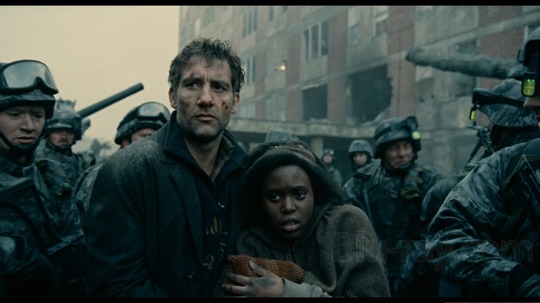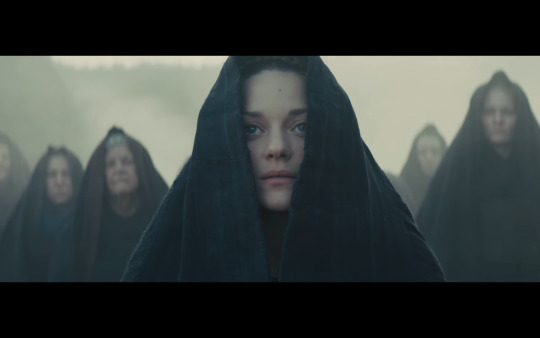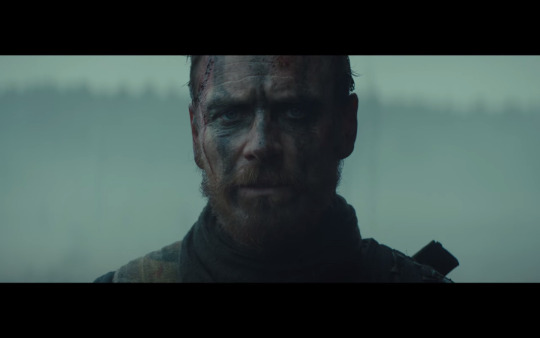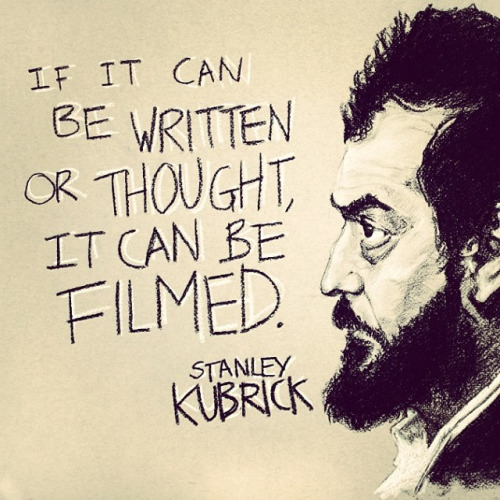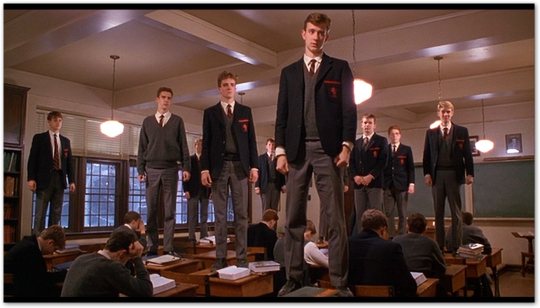Text
Writer’s Elevator Pitch
Firstly, what is an elevator pitch?
Imagine you’re in an elevator, and the door opens and Harvey Weinstein walks in. He’s standing there, and it’s just you two standing side-by-side. You have thirty seconds or ten floors before Harvey gets out. You have the chance to pitch your film idea that you think couldl be the next Shawshank or Goodfellas. What exactly do you say in thirty seconds.
Most people are terrible at pitching. They ramble on explaining every plot line of their story, or they umm and ahh their way through an explanation or description of a shot in their film. This is a sure way to bin the opportunity of a lifetime. Please don’t do that.
Instead I teach my students a strict set of guidelines for pitching and then I try as much as possible, in each of my units to get them to practice pitching. I teach them to concisely describe their stories within 30 seconds-1 minute.
Pitching is an essential part of filmmaking process. From the very inception of your film’s idea through to it’s completion. Often pitching is about perfecting your story, by repeatedly discussing your idea to anybody who will listen. It can highlight issues within your story and help you gauge whether your film speaks to audiences.
The trick is to have a pitch that will engage people and get them interested. If they look bored, you need to work on your idea. Ensure that you rehearse your pitch and know it by heart.
1. Introduce yourself - Simply say your name
2. Tell us the format Is it a documentary, webisode, feature or short? This is important as it provides a frame for your story. E.g. A film about a whale could be Free Willy or Black Fish.
3.Tell us the length Is it a feature or a short film? This makes a big difference in understanding your story. A short five minute comedy has more possibilities as festivals than a nineteen minute comedy. A listener can gauge whether your story will work in the allotted time.
4. Tell us the Genre This is important as it adds to the frame that surrounds your log line.
“A comedy about a group of ancient vampires living in a flat in Auckland”
If you let your audience know that this is a feature film comedy, before you throw out your hook, they will envision the possibilities that could happen. The mere suggestion of ancient vampires in Auckland evokes all kinds of scenarios.
5. Tell us your story in concise terms. Your logline is a great place to start. Not all loglines work in an elevator pitch.
If you are rambling on and describing the way the film will be directed than you need to take your story back to the drawing board. You know, but are unwilling to admit that your story is not able to engage an audience.
6. Tell us the hook or USP. Ask yourself, what is the hook or unique selling point of the film. This is the firs thing you want to throw out to your audience.
“Arnold Schwarzeneger and Danny Devito as twins”
6. Explain why your film should be seen or made. Why will audiences go to see your film? Explain why it is original and appealing (Only do this if Harvey Weinstein is travelling to the 50th floor)
So the students pitched their films today and I think they did pretty well. They stuck to the format and kept it short and sharp. It was evident which writers were passionate about getting their films made and understood their stories in depth. Their pitching skills have significantly improved since last trimester. They took the pitching process seriously and this was good to see.
#pitching#filmpitching#filmmaking#howtopitch#selling#sellingyourfilm#teaching#filmschool#film#filmmaker#teachingpractice
1 note
·
View note
Text
Cinematography workshop
The cinematography workshop was run in the manner of last trimester. The students provided a number of key images that reflected the way they wanted their film to look. They then reproduced these images using a FS700 within a six hour class. I brought in a guest lecturer to take this workshop as cinematography is not my expertise.
Firstly we begun the workshop by looking at the images that the students provided, and discussing how they might utilise the lights they have on hand to create the same look and feel for their own film. I had 10-15 audio students on board for this workshop as well, and they recorded sound during the workshop.
We begun by creating some shorts within the studio utilising lighting, and then after lunch moved out of the studio to an outside location that was slighting industrial. From this the students were able to perfect a look and feel for their film, and have from there decided to utilise only natural lighting where possible, as they are filming on location.
2 notes
·
View notes
Text
Script Workshop IV (The rowing metaphor)
So this was a disappointing class. The students were suppose to deliver their fourth and final draft and an elevator pitch and only two of my students turned up! I only received a few script in my email box the night before.
It’s disappointing as a teacher when this happens. Sometimes you think that it may be your own failure, and it can be difficult not to take this to heart. However I think the concept of an elevator pitch may have scared them all off.
Looking back in hindsight I think that this may have been one large co-incidence. All of the students decided to take a sick day or miss their alarm on this one day - assuming that each other would turn up and make up for their own absence. So I made the best of the class and we workshopped the two students scripts. They benefited from the class and the other students did not. I put off the elevator
This group have been challenging. Whilst my previous group of students last trimester were fully committed towards any task, many within this group have been reluctant and somewhat hesitant to commit. Whilst last trimester felt like I was the stroke of a very strong rowing crew, trying to pull them over the line, this trimester has felt out of synch.
I give the rowing metaphor because rowing is the only sport I know, where it literally takes a group of people in exact unison of movement and strength to pull together across the finish line. Once, I was at the head of an eight, and the person behind me, my best friend, literally ran out of energy after the first kilometre of a race. We had nine kilometres to go and there were six other people behind us, depending on us. Whilst I couldn’t see her, I could feel her energy waning and hear her cries of help. All I could do was pull the oar back in forth and roar at her to keep going. I knew she was sinking under self-doubt, having given it too much, far too early. I had to talk her back into the race, into believing she could win. And she stayed with me, and we both, together, pulled that boat over the line and finished the race.
This is what is feels like when you are teaching this studio unit and it is going well. Your students are like a rowing crew behind you, all pulling their weight, all aiming for the same direction. It is a thing of immense beauty and it feels good for everyone. Whether or not you finish the line first or not it doesn’t matter - it feels good either way.
I am yet to get this crew in unison. Who knows what can still happen right?
I’ve crossed the finish line like this before.
1 note
·
View note
Text
Casting and Running Rehearsals workshop
This is one of my favourite workshops to run. Last trimester I ran the workshop a little differently. This time, I brought in an actor for the students to meet and direct and we took them through the audition process.
Firstly I begun the workshop by giving the students an hour long presentation on where and how to cast, contact casting agents, use showcast and other online services, speak to acting schools. How to professionally go about speaking to agents and organising auditions etc.
The last two hours of the workshop begun with an informal QnA. I find the students are often not comfortable in the presence of actors and I really wanted them to overcome this issue. I have worked with the actor on a number of occasions, in different capacities therefore it was easy for me to ask some in depth questions and I knew Maddy would give articulate and educated answers. She provided a great deal of insight from an actor’s perspective as to what she was comfortable with on stage, and how best to approach the audition process.
Having made several shorts and run my own casting sessions for both children and adults, I have my own process which I like to follow whilst overseeing auditions, however this may not be right for everyone. As you approach different productions I find the process of auditioning does change. For instance, working with children, I find improvisation really brings out their potential as they are used to playing. I teach my students that it is best to approach the audition process with a strategy. For instance.
5 min Introductions/ Ask actor if they are ok with being filmed
10 min Read through script scenes 1/ 4
10 min Improvisations
I usually run improvisation if I cannot see a strong emotion from an actor which they need to show in the film. E.g. If they need to manipulative and they are not showing me that they can do that. I run improv and get them to talk their way into me giving them an apple.
The students then sat up a camera and ran their own audition for the script that had been chosen to go through to production. Whilst going through this process we came to two hurdles, which we needed to overcome.
1. It was difficult for the actor as they had not had time to learn lines (my fault)
2. The actor wanted to know the space and have props with which to work
When the students warmed up, they begun to really feel comfortable in the audition process and more clear with their directions. They found props to give to the actor and this helped her settle into the role. Whilst there were some minor issues with too many of the crew giving feedback to the actor, they were aware of this by the end. The actor quickly begun to feel more comfortable and get into her part. The crew became more familiar with the actor and open to giving direction. I was really impressed with their work towards the end of the class.
I think the students learnt a great deal from this class - in order to have more empathy and understanding of their actors needs and how to communicate better on set. They also have practice for their upcoming auditions and understand the need for their own preparation. They need to know the answers to the questions that the actor will ask. They need to know their script in and out before they begin to audition.
0 notes
Photo
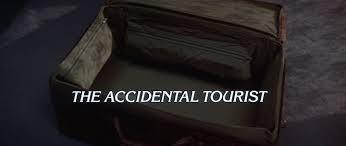
Opening Credit sequence from ‘The Accidental Tourist’
2 notes
·
View notes
Text
Production Design Workshop
Today I took the students through a production design workshop. I’ve run this workshop before and it gives them a greater understanding and appreciation of the role of ‘production designer’. They also come to understand where the production designer fits within the entire film scope.
After the workshop, many students who have never been interested in the role are very happy to take it on.
Specifically I like to focus the workshop on production design in relation to character and world building. What does a crumpled shirt say about a character? It says that they do not take care of themselves. What does a pile of boxes in their bedroom? It says they’re either leaving or have just moved in. Production Design is not all beauty and epic spectacle like a Wes Anderson film - it is rather an essential part to telling a story and building a world.
I do not need to show the students The Life Aquatic or a big period film to get them to understanding production design. Rather I show them ‘The Accidental Tourist’ - the scene at the beginning where William Hurt is packing his suitcase. The way his folds his shirts, the meticulous placement of every item within the suitcase and finally the photo of his deceased son - all of these props are essential to illustrating who that character is and what is wrong with his life.
I show them Seven, and get them to tell me about Brad Pitt’s character, and then Morgan Freeman’s character from a few scenes. They begin to see that production design creates a whole picture and adds to the seven. The dichotomy of the two characters and why there is immediate tension between them.
Another example is Donald Draper is his suit and tie - when his life is together, his suit is immaculate, when he is falling apart his hair is a mess, he looks like he’s been wearing his shirt for a week. The production design is the very fabric of the show, which illustrates changing time within the series over a number of years. The subtle changing of the firm’s logo. The styles of the characters costumes or the way their homes are furnished.
I teach my students that you do not need a million dollar budget to create great production design. You need to be able to illustrate character and world in the smallest things. You need to utilise what you have in your wardrobe or your actors wardrobe and head down to your local op shop or savers. A few key items can tell us that the film is a period piece. An old radio, or a classic car placed in the street in the background.
I then ask the students to choose one of the scripts from their classmates and to create a visual document outlining how they envision bringing the script to life. They include this in an online blog.
0 notes
Text
Script Workshop III
The students have now delivered the third draft of their scripts. Whilst the scripts have significantly improved from the previous draft, they seem to have difficulty with their world building and characterisation.
I like to talk about the ‘fine line’ when writing. Writing scripts particularly is like sitting on a high-wire. One fall in any direction will end up with you splat on the ground. What I mean by a fine line is that too much exposition is underestimating your audience, not enough exposition and your all of the information and backstory is in your head rather than on the page. Too much dialogue reads like a teleplay, not enough and you’re audience are confused. The list goes on and on. Learning that delicate and fine balance between how much of something to put into a script and how much to leave out is a writing skill that takes time and practice. Writer’s spend hours, days, months and sometimes years in a room by themselves aching and paining of how much to put in.
When it comes to teaching this is very difficult. You can give a direction like - there is too much exposition and a student will make their script confusing to read. You can tell them to cut back on dialogue and they will make a silent film. They become frustrated with this process and they are still learning where the ‘fine line’ lies. For myself as a screenwriter, it can be frustrating teaching them as I know what I would do. However it is about teaching them the skills to find where the line lies.
This third workshop illustrated that they find this back and forth quite frustrating. However even if they do not want to be screenwriters, they have come to understand the difficult of the role, and its importance in making a great film. If its not in the script, it won’t be on the screen.
The students from this trimester have had great difficulty putting what is in their heads on the page. This means, they seem to understand their world and what they want to say, but how to get their premise on the page is a struggle. It is my duty to not hover over them but rather ask the right questions to push them towards an answer.
When honing in on this difficultly their face as storytellers, I think it comes from lack of watching films. An essential understanding of structure can come from immersing yourself in films from a young age. Being able to pinpoint structural points in a film and find why they are there and how it relates to the character’s arc and the premise etc. It is very difficult to speak to students about structure or hero’s journey when they haven’t seen Star Wars!
I like to give them the example of Jurassic Park.
Who in the central character of the film? Sam Neil!
What is his flaw? He doesn’t like children and can’t commit
What is the midpoint? When the t-rex attacks and he is forced to journey and save the kids
What is the resolution? When he is in the helicopter and he has both kids in his arms
Although the character arc is slightly bogus, it is definitely there in the film.
#teaching#teachingpractice#filmschool#teacher#students#screenwriting#scriptwriting#writing#filmmaking#makingfilms#herosjourney#lecture
0 notes
Text
Script workshop Redux
The students have delivered their second drafts and implemented changes from their warm and cool feedback. Disappointingly there were a few students who failed to meet this deadline or provide any explanation. Working to short deadlines is an important part of being a screenwriter, as is the rewriting and feedback process. I’m hard and firm when it comes to deadlines!
Some of the students struggle with this short one week deadline between script workshops as they are not used to organising their ideas or brainstorming in such a short space. However I keep the deadline very strict. Working to a deadline is an essential part of the filmmaking process and my job is to install them with skills that they will hopefully take with them when they graduate.
I encourage the students to redraft from the very start, rather than adding additional material or altering their previous drafts. I feel that this opens them up to new ideas, and their writing improves vastly within a very short space of time.
I felt that my feedback on one students script in week one could have been more delicate. Having come previously from script editing for professional writers, I am used to having a very open dialogue when giving feedback. That means - filmmakers give me the opportunity to tear their scripts apart, and they understand that this is the only way to make their scripts more coherent and tightly structured. I realise now, that at this stage in their education and understanding of the filmmaking process, it is essential that I provide feedback in the right manner. Some students will take script feedback and know not take it personally, other students will kick and fight their way until the end. Resulting in a film that usually doesn’t work.
It is an extremely difficult process teaching screenwriting at this level as the students have varying skill levels. When there are issues with formatting, spelling, grammar, structure, on-the-nose dialogue and more, you must choose which beast to slay first. Throwing a mound of feedback at the students all at once overwhelms them and they tend to lose confidence and retreat. Therefore it is essential to give one piece of feedback at a time.
For instance, two of the students scripts had far too much dialogue. They read like teleplays. Therefore my feedback was to write their entire script without dialogue. Pushing them to show things visually, rather than relying on characters to say what is happening.
Two of the students begun page one with their character waking up. This is a regular occurrence in student films. They either open up scene one with a character waking up and looking in a mirror, or eating breakfast. These cliche scenes say nothing about the character. So unless the character wakes up in space, or wakes up and there is a dinosaur outside their window, don’t open your film up this way! My advice was to think about who the character is (actions speak louder than words) and then write a scene that encapsulates their character entirely.
1 note
·
View note
Text
1st Assistant Director workshop
Today I ran a first AD workshop and production management workshop for the students. They already seem to know the role of a 1st AD on set, however I did feel that there are a number of issues that I’ve seen arise on their productions.
1. They do not always choose the right person for the 1st AD Role
2. The 1st AD does not schedule properly
3. They do not take into consideration correct OH&S processes
4. The 1st AD is overly aggressive or rude
It was my intention to focus on ensuring that they begun to deepen their understanding of the role. Hence we begun the class with a discussion about what went wrong on their previous films. Of course, most of what they said could fit neatly into one of the issues I’ve listed above.
As apart of this workshop I printed out a short film script set on a beach, which they then read and scheduled as a team. A beach shoot poses significant issues when making a film, therefore I felt this would be a good script to challenge the students and increase their problem solving skills.
Taking into consideration a number of circumstances, they had three hours to completely shot list and schedule the film to ensure a smooth shoot. No easy task.
When you schedule a shoot, there is an endless list of constraints to take into consideration. As a first AD or production manager of a short film, you need to think about how long it will take each person to fulfil their role, schedule breaks, overtime, set up and lens changes, convenience to cast, performance etc etc etc. The list is never-ending. There is a fine and delicate balance towards scheduling a film, in order to keep everybody happy.
I have noticed over the last year that some of the students films tend to be extremely disorganised, and I feel this comes down to incorrect scheduling. Of course there are elements you may never foresee, but you can prepare for these issues by organising pick-ups and scheduling more time than needed. The idea is to not go overtime, and if you begin to go overtime, you cut down shots.
First off the students took time to write a shot list. They then begun to pencil in shoot dates and how long they estimated they would need for the shoot. They took into consideration of the child actor in the script, the changing light, the complication of certain shots. They were beginning to think like professionals.
Having already scheduled the film myself and actually shot it - I was impressed with the similarity of their finished schedule with my own schedule. I think they learnt a great deal from this workshop and I was impressed by the leadership skills from the students and their commitment to the exercise.
I also introduced the students to the scheduling software ‘Shotlister’, which is relatively cheap and is fast becoming the industry standard for film shoots. The software enables a 1st to cancel and update the schedule on an Ipad or laptop whilst the film is being shot. So, for example, if you’re running overtime, and you need to cut a shot out, you can delete the shot and it will adjust the entire schedule. I’m very much championing the university to bring in this software for all of the students to utilise.
1 note
·
View note
Text
And They’re off...
Another ten students this trimester. The quiet eye of the storm before the massive studio one intake next trimester.
Once again, we begun the first class with an intensive six hour scriptwriting workshops, examining their initial drafts. (As we like to call it in the film industry- 'The Vomit Draft' Because most of it won't end up in the final draft) There were a lot of small issues to overcome - formatting errors, poor grammar, spelling, lack of cover page etc. Then the larger issues such as lack of visual storytelling, overwrought dialogue, scenes that do not move the story along. The students begun giving each other warm and cool feedback. By the end of the six hours, they were getting the hang of it and their feedback was more detailed and precise.
This trimesters group of students are highly varied in the skills levels. I have taught them before in CIU111. They have a tendency to arrive late and their attendance drops off midway through the trimester. Some very difficult traits which I am hoping to rid them of by the end of this trimester. I think they need a great deal of encouragement, as they are lacking somewhat in confidence in their own abilities, yet have great potential.
Friday's workshop was focused on production design - firstly an overview of the entire process and what a production designer's role entails. Followed by an examination of films such as Seven, A Guide to Recognising Your Saints, American Gigalo etc. To illustrate how very simple production design can have great power. A character wearing a crumpled shirt can visually tell an audience that a character is lazy, messy or doesn't bother. A few unpacked boxes can illustrate that somebody is leaving, or has just moved into their house. A metronome in seven can show that your character is meticulous and needs ritual to fall asleep.
To follow up this workshop, the students are required to choose another students script and provide a production design blog to create an overall vision for the film.
We finished off the class with a discussion about how you can illustrate character through their reactions to certain events. An example I use is 'The Bodyguard' - love it or hate it, it's written by Lawrence Kasdan. In three short scenes and five minutes, the students could name twenty traits and beliefs of the title character played by Kevin Costner. I use this example because it becomes evident that they too have the ability to write a character within a 8 minute short film who has depth, beliefs, wants, needs and a clear flaw, without even having them speak.
0 notes
